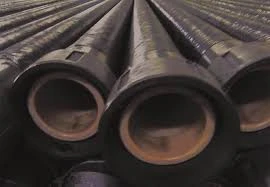
-
 Afrikaans
Afrikaans -
 Albanian
Albanian -
 Amharic
Amharic -
 Arabic
Arabic -
 Armenian
Armenian -
 Azerbaijani
Azerbaijani -
 Basque
Basque -
 Belarusian
Belarusian -
 Bengali
Bengali -
 Bosnian
Bosnian -
 Bulgarian
Bulgarian -
 Catalan
Catalan -
 Cebuano
Cebuano -
 China
China -
 China (Taiwan)
China (Taiwan) -
 Corsican
Corsican -
 Croatian
Croatian -
 Czech
Czech -
 Danish
Danish -
 Dutch
Dutch -
 English
English -
 Esperanto
Esperanto -
 Estonian
Estonian -
 Finnish
Finnish -
 French
French -
 Frisian
Frisian -
 Galician
Galician -
 Georgian
Georgian -
 German
German -
 Greek
Greek -
 Gujarati
Gujarati -
 Haitian Creole
Haitian Creole -
 hausa
hausa -
 hawaiian
hawaiian -
 Hebrew
Hebrew -
 Hindi
Hindi -
 Miao
Miao -
 Hungarian
Hungarian -
 Icelandic
Icelandic -
 igbo
igbo -
 Indonesian
Indonesian -
 irish
irish -
 Italian
Italian -
 Japanese
Japanese -
 Javanese
Javanese -
 Kannada
Kannada -
 kazakh
kazakh -
 Khmer
Khmer -
 Rwandese
Rwandese -
 Korean
Korean -
 Kurdish
Kurdish -
 Kyrgyz
Kyrgyz -
 Lao
Lao -
 Latin
Latin -
 Latvian
Latvian -
 Lithuanian
Lithuanian -
 Luxembourgish
Luxembourgish -
 Macedonian
Macedonian -
 Malgashi
Malgashi -
 Malay
Malay -
 Malayalam
Malayalam -
 Maltese
Maltese -
 Maori
Maori -
 Marathi
Marathi -
 Mongolian
Mongolian -
 Myanmar
Myanmar -
 Nepali
Nepali -
 Norwegian
Norwegian -
 Norwegian
Norwegian -
 Occitan
Occitan -
 Pashto
Pashto -
 Persian
Persian -
 Polish
Polish -
 Portuguese
Portuguese -
 Punjabi
Punjabi -
 Romanian
Romanian -
 Russian
Russian -
 Samoan
Samoan -
 Scottish Gaelic
Scottish Gaelic -
 Serbian
Serbian -
 Sesotho
Sesotho -
 Shona
Shona -
 Sindhi
Sindhi -
 Sinhala
Sinhala -
 Slovak
Slovak -
 Slovenian
Slovenian -
 Somali
Somali -
 Spanish
Spanish -
 Sundanese
Sundanese -
 Swahili
Swahili -
 Swedish
Swedish -
 Tagalog
Tagalog -
 Tajik
Tajik -
 Tamil
Tamil -
 Tatar
Tatar -
 Telugu
Telugu -
 Thai
Thai -
 Turkish
Turkish -
 Turkmen
Turkmen -
 Ukrainian
Ukrainian -
 Urdu
Urdu -
 Uighur
Uighur -
 Uzbek
Uzbek -
 Vietnamese
Vietnamese -
 Welsh
Welsh -
 Bantu
Bantu -
 Yiddish
Yiddish -
 Yoruba
Yoruba -
 Zulu
Zulu
anchoring, drilling rods, and bits for efficient and precise ...
Enhancing Efficiency and Precision in Drilling with Anchoring, Drilling Rods, and Bits
In the ever-evolving fields of construction, mining, and geological exploration, the demand for efficiency and precision has remained paramount. Among the various components that contribute to successful drilling operations, anchoring systems, drilling rods, and bits hold significant importance. These elements not only improve the overall productivity of drilling projects but also enhance the accuracy required for specific applications.
The Role of Anchoring Systems
Anchoring systems serve as a critical foundation for drilling operations. They provide stability to the drilling rig, allowing for precise operations in various environments, whether on land or underwater. A robust anchoring system minimizes the risk of movement caused by environmental factors such as strong winds or currents. This stability is essential when drilling in challenging terrains or conducting deep drilling operations, where even slight deviations can lead to significant operational setbacks.
Modern anchoring systems are designed with advanced materials and engineering techniques, providing enhanced strength and durability. The choice of anchor type—such as driven piles, screw anchors, or deadweights—depends on the specific requirements of the project. Each type offers unique advantages, allowing operators to select the best option for their specific drilling conditions, thereby increasing both efficiency and safety.
The Importance of Drilling Rods
Drilling rods act as the backbone of the drilling process. They connect the surface drilling equipment to the drilling bit and facilitate the transmission of torque and drilling fluid down to the rock layer. The efficiency of drilling rods directly impacts the overall drilling performance. High-quality rods made of durable materials not only withstand extreme pressures and abrasive conditions but also allow for smoother operations, reducing wear and tear.
anchoring, drilling rods, and bits for efficient and precise ...

Innovations in drilling rod design, such as the use of advanced alloys and the incorporation of features like quick-connect joints, have significantly improved drilling efficiency. By reducing the time taken for rod assembly and disassembly, operators can minimize downtime and maximize productivity. Additionally, advancements in rod technology have led to the development of telematics systems that monitor performance and provide real-time feedback. This data helps operators optimize drilling parameters, further enhancing drilling efficiency.
The Impact of Drill Bits on Precision
The choice of drill bit is perhaps one of the most critical decisions in the drilling process. Different geological formations require specific types of bits to optimize performance. For instance, diamond bits are preferred for hard rock formations due to their superior cutting ability, while roller cone bits excel in softer soils. The precise selection of drill bits not only affects the rate of penetration but also its accuracy, especially in complex drilling operations like directional drilling.
Moreover, technological advancements in drill bit design, such as the development of hybrid bits, have paved the way for enhanced versatility. These bits combine features of PDC (polycrystalline diamond compact) bits and roller cone bits, offering operators a wider range of applications and improved adaptability to changing geological conditions.
Conclusion
In conclusion, the integration of high-quality anchoring systems, durable drilling rods, and advanced drill bits is fundamental to achieving efficiency and precision in drilling operations. As the industry continues to innovate, the importance of these components will only grow. Adopting the latest technologies and materials enables drilling projects to meet increasing demands while ensuring safety and operational excellence. As we move forward, investing in these critical elements will be key to unlocking new possibilities in drilling efficiency and precision.
Latest news
-
Exploring the Benefits of Top Hammer Drifter Rods for Enhanced Drilling PerformanceNewsJun.10,2025
-
High-Precision Fiberglass Winding Machine for GRP/FRP Pipe Production – Reliable & Efficient SolutionsNewsJun.10,2025
-
FRP Pipes & Fittings for Shipbuilding - Corrosion-Resistant & LightweightNewsJun.09,2025
-
Premium FRP Flooring Solutions Durable & Slip-ResistantNewsJun.09,2025
-
Premium Fiberglass Rectangular Tanks Durable & Lightweight SolutionNewsJun.09,2025
-
Tapered Drill String Design Guide Durable Performance & UsesNewsJun.09,2025









